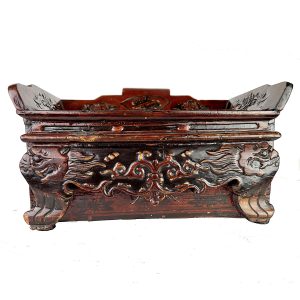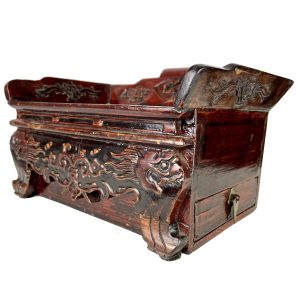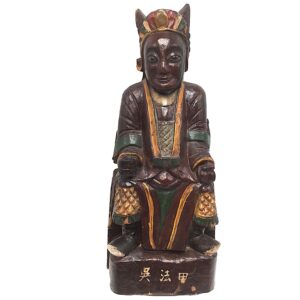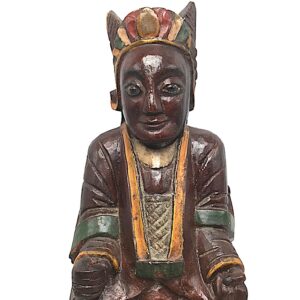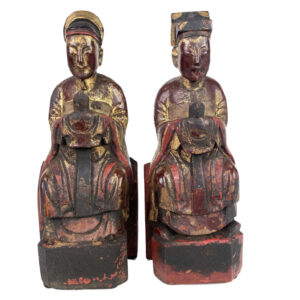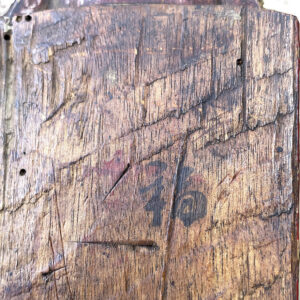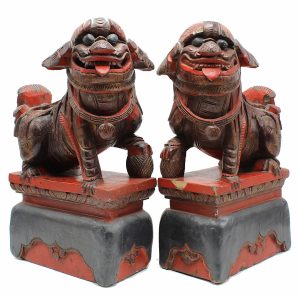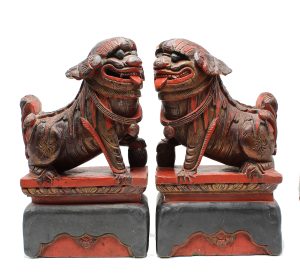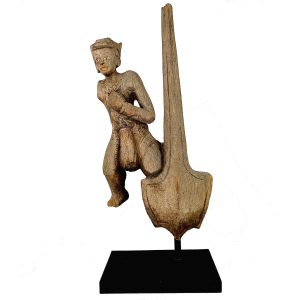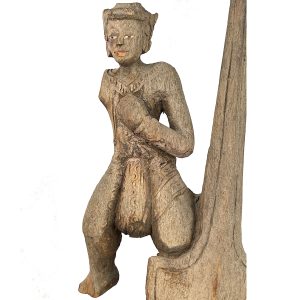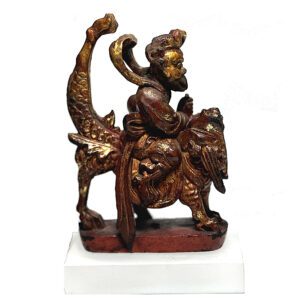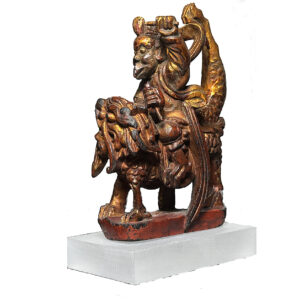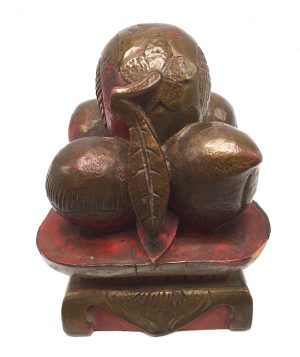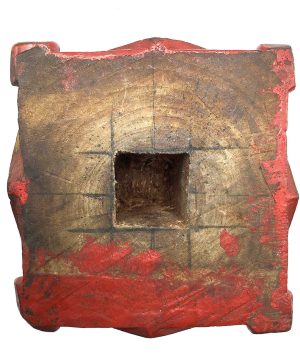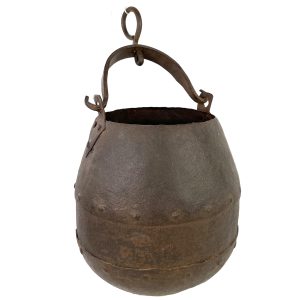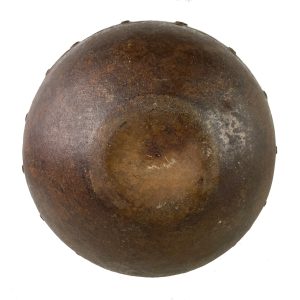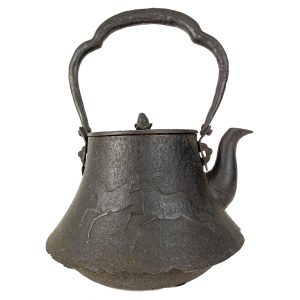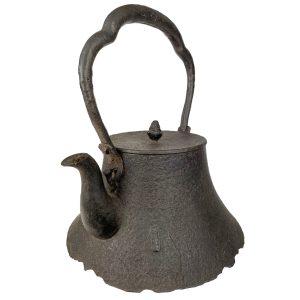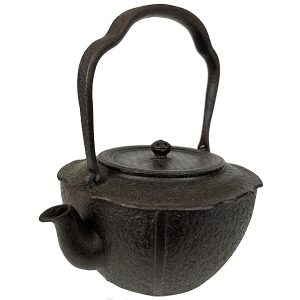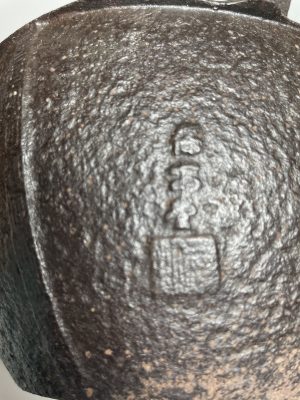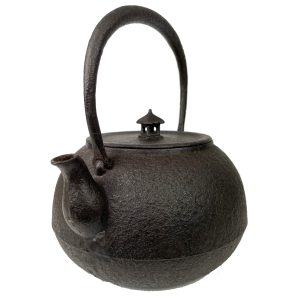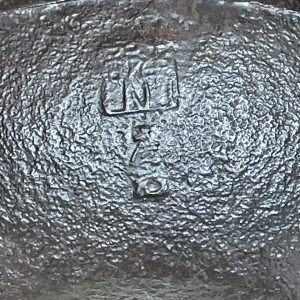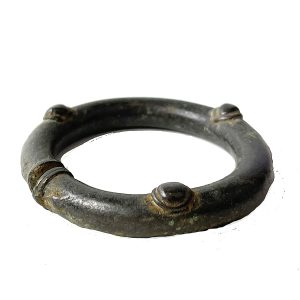Showing 13–24 of 200 results
-
Sale!


$325.00 Original price was: $325.00.$225.00Current price is: $225.00.
H: 6.375″ W: 10.75″ D: 7.125″ | FREE SHIPPING WITHIN CONTINENTAL U.S.
Charming carved and lacquered multi-use box, opening top and side drawer. Auspicious carved symbols – fu lion heads on front and plum blossoms and fan the front and frame. Painted calligraphic wish for sons. Likely was and still is unique wedding gift .
-
Sale!


$325.00 Original price was: $325.00.$275.00Current price is: $275.00.
H: 12.75″ W: 3.375″ D: 3″ | FREE SHIPPING WITHIN CONTINENTAL U.S.
Either a Taoist house deity/dignitary or an ancestor figure, this colorful provincial carving has painted calligraphy identifying his name. The image has characteristics of Guandi, the God of War holding a tael or a military seal with military maille.
-
Sale!


$850.00 Original price was: $850.00.$650.00Current price is: $650.00.
H: 7.5″ W: 2.875″ D: 2″ | FREE SHIPPING WITHIN CONTINENTAL U.S.
VA’s most unique and finely crafted Kitchen God couple. Beautifully carved, clasping hu tablets, approachable features, smiling lips. Painted character on base wish for “happiness.” Add positive chi, enhance feng-shui.Unique house warming/wedding gifts.
-
Sale!


$995.00 Original price was: $995.00.$695.00Current price is: $695.00.
H: 12″ D: 7″ D: 7.75″ | FOR SHIPPING INFORMATION CONTACT US AT 213-568-3030
This very fine pair of antique carved males fu lions represents the dual nature of these mythical animals: as protective images they are powerful and fierce, as Buddhist images they are whimsical with smiling faces, dangling tongues, hanging ears and bushy tails. They are extremely well carved with harnesses and bells around their necks, detailed manes and tails on high intricately decorated bases to signal their importance. Perfect for enhancing feng shui in a home or office, large finely decorative wood pairs like this are extremely hard to find.
-
Sale!


$450.00 Original price was: $450.00.$315.00Current price is: $315.00.
H: 23″ W: 10″ D: 5.5″ | CALL 213-568-3030 OR EMAIL [email protected] FOR SHIPPING
This fanciful teak carving is a Nat placed atop a large shield wearing a sarong and eyes with inset mother of pearl. Although of shamanistic origins, they are still in Buddhist temples, pagodas, government buildings, and in nat centers throughout Burma.
-
Sale!


$345.00 Original price was: $345.00.$225.00Current price is: $225.00.
H: 6″ W: 2.5″ D: 4″ | FREE SHIPPING within continental US.
Miniature Taoist Thunder God who protects from injustice and punishes evildoers with his drum, mallet, chisel. Has bird’s beak and claws and dragon’s wings, rides a mythical hou. Part of bed frame carving with many protective deities.
-
Sale!


$225.00 Original price was: $225.00.$155.00Current price is: $155.00.
H: 4.75 ” Dia: 3.675 ” | FREE SHIPPING WITHIN CONTINENTAL U.S.
This carved food offering was an auspicious bed ornament to bring the lucky couple prosperity, health, a long life and many sons as the pomegranate symbolizes fertility, the peaches longevity. Carved offerings were often wedding gifts.
-
Sale!


$150.00 Original price was: $150.00.$85.00Current price is: $85.00.
H: 12.75″ Dia: 7″ | FREE SHIPPING IN CONTINENTAL U.S.
Simple attractive antique welded Indian iron pot with warm rust color patina. Clear lines indicate where pieces were joined in its construction. Egg shape with a rounded bottom for easy pouring, it has a warmth to add charm to any room, especially a kitchen or filled with dried flowers.
-
Sale!


$695.00 Original price was: $695.00.$550.00Current price is: $550.00.
Ht: 12.5″ W: 10″ D: 9.5″ | CALL 213-568-3030 OR EMAIL [email protected] FOR SHIPPING COST
Made in the Meiji era (1868-1912),this hand crafted antique Japanese cast iron tetsubin teapot has an unusual decorative handle and curved spout and has a beautiful relief design of galloping horses. Horses have been revered creatures in Japanese culture that embody grace, power and nobility. The knob on the lid probably represents a lotus, the Buddhist symbol of purity and enlightenment. As with all antiques, these pieces are purely decorative for display purposes only.
-
Sale!


$325.00 Original price was: $325.00.$275.00Current price is: $275.00.
Ht: 8.625” W: 7.5” D: 6.5” | CALL 213-568-3030 OR EMAIL [email protected] FOR SHIPPING COST
The hand crafted Tetsubin teapot displays simple yet elegant design: a scalloped top, gently curved handle, and short rounded spout, textured surface. The body is divided in 4 quadrants with meander border designs and the lid is has tiny diamond shaped indentations and is topped with a lotus shaped knob. A raised manufacturers seal on the back. Like all old Tetsubin cast iron kettles, it has rust on the bottom which can be removed by boiling green tea inside it, and is thus for display purposes only.
-
Sale!


$295.00 Original price was: $295.00.$245.00Current price is: $245.00.
Ht: 9.25″ W: 8″ D: 7.25″ | CALL 213-568-3030 OR EMAIL [email protected] FOR SHIPPING COST
Meiji hand crafted cast iron Tetsubin, simple yet elegant textured surface, unique shape top temple ornamental knob. Manufacturer’s seals on side. Perfect tea lovers gift, it is recommended for display only to enhance any kitchen.
-


$395.00
Prehistoric Thai Bronze Age jewelry, adzes and tools have been found all over Thailand. Excavations from various soil levels show many sites had been inhabited for millennia. They confirm the existence of an early, well-developed metallurgical tradition of bronze digging and cutting tools, adzes (ancient axe like tools to cut wood), adult and child’s bronze…
End of content
End of content

